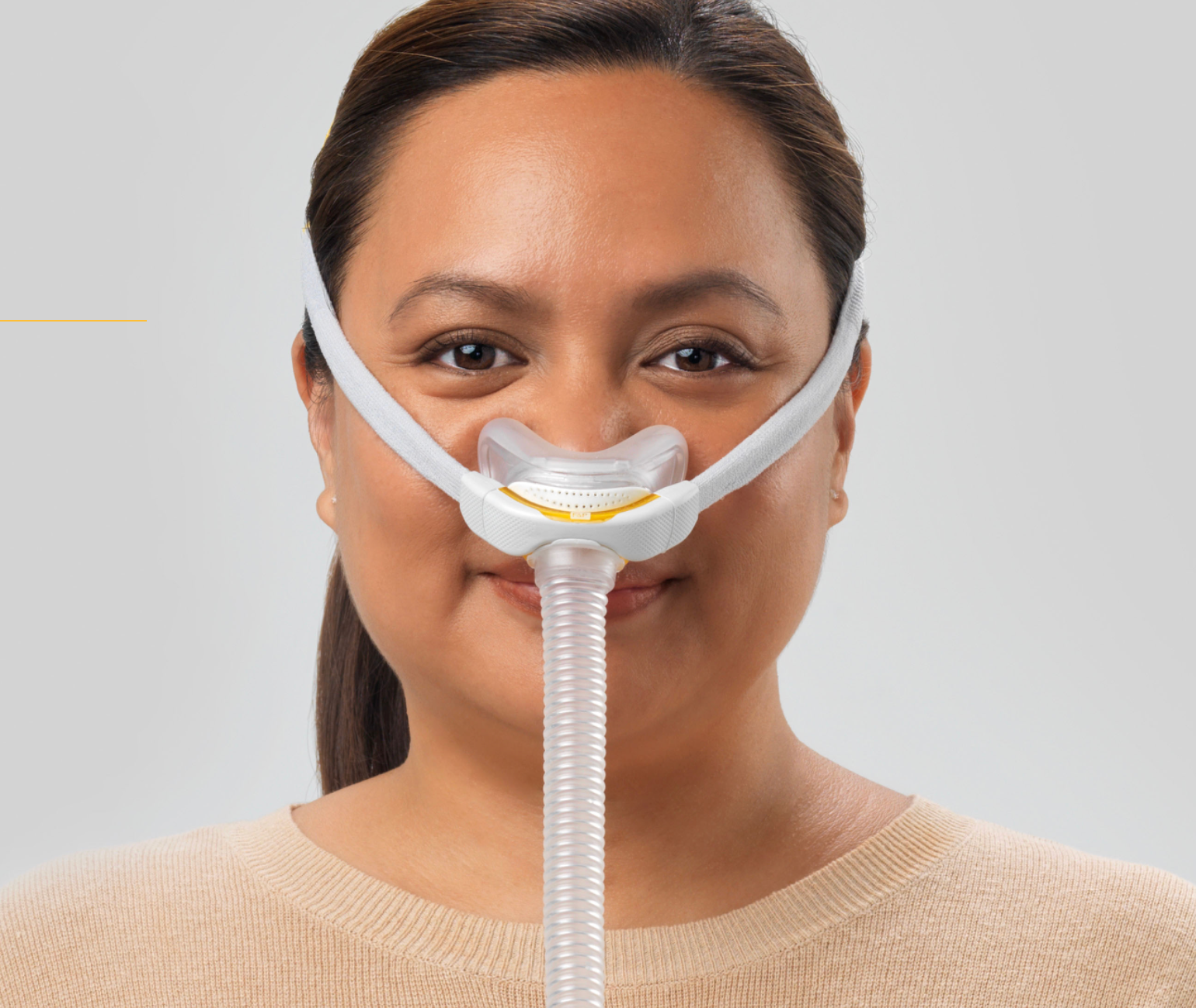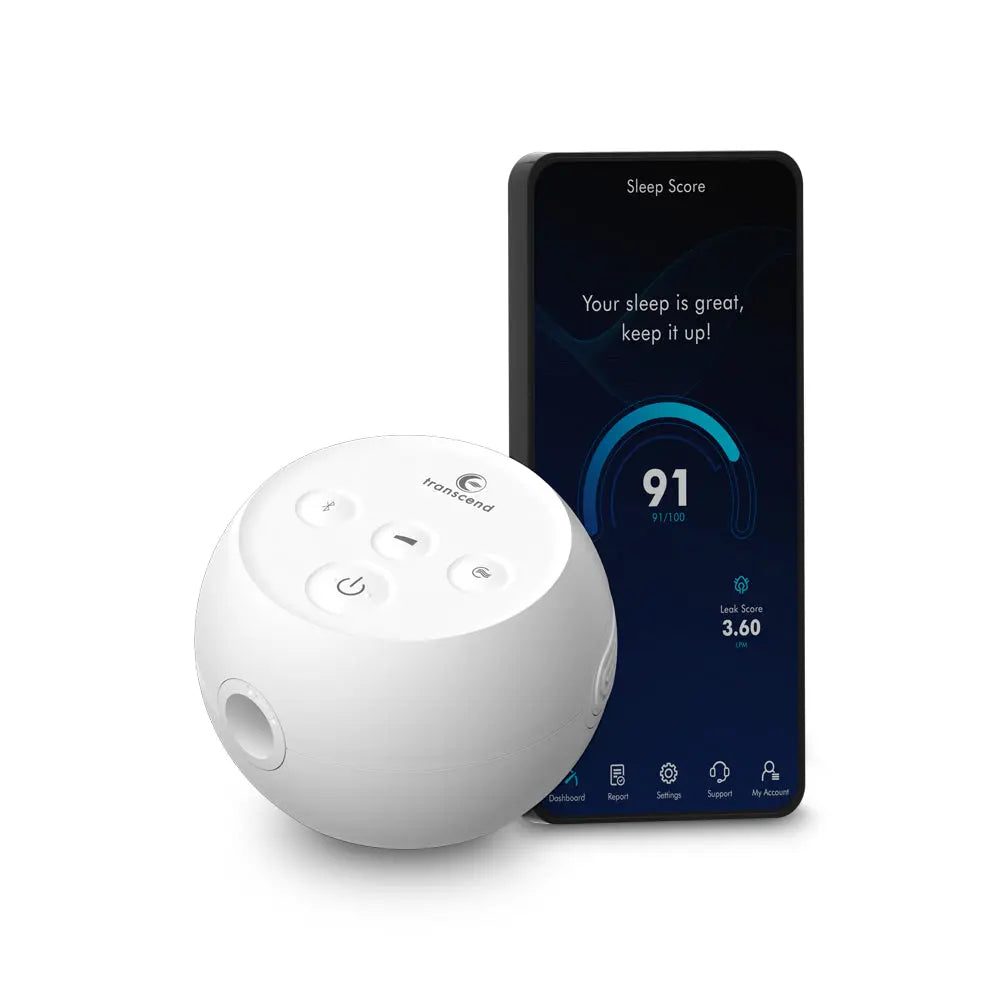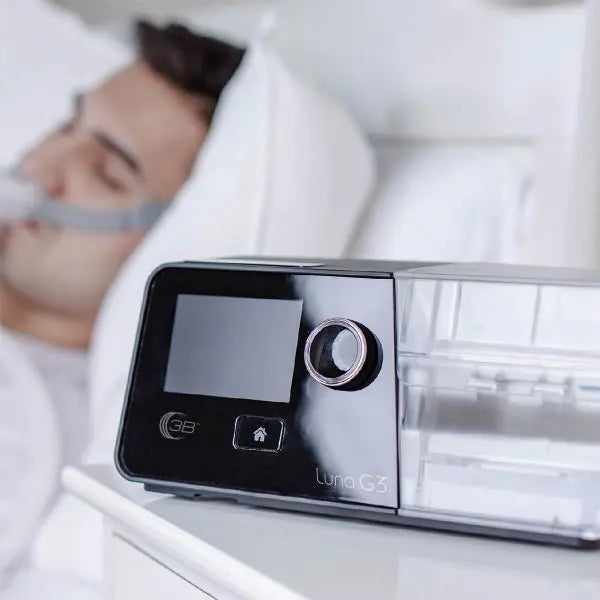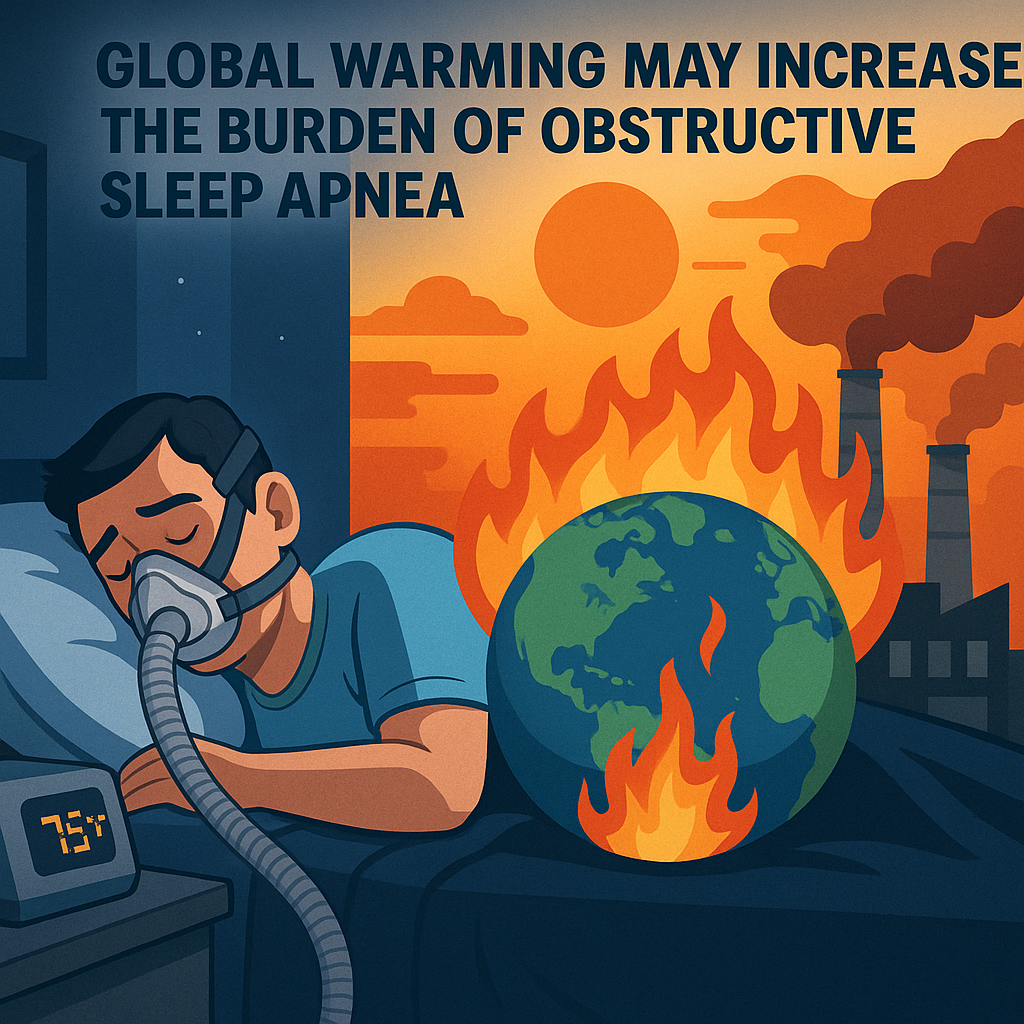Discover the ResMed AirFit X30i: A Game-Changer for CPAP Comfort
Discover the ResMed AirFit X30i: A Game-Changer for CPAP Comfort
Call (413)733-7843 To Order Today!
If you’re on a CPAP journey to manage sleep apnea, finding the right mask can feel like searching for the perfect pillow—essential for a good night’s sleep. The ResMed AirFit X30i, launched in May 2025, is an innovative oral nasal CPAP mask that’s turning heads with its unique blend of full-face coverage and nasal pillow comfort. Designed for flexibility and ease, it’s a promising option for those seeking a less intrusive mask. Let’s explore what makes the AirFit X30i stand out and how it could transform your sleep therapy.
What is the AirFit X30i?
The AirFit X30i is an oral nasal mask that combines nasal pillows, which rest securely inside the nostrils, with an oral cushion for mouth breathers. This hybrid design delivers the secure seal of a traditional full-face mask without the bulk, ideal for users who find standard masks claustrophobic. According to the ResMed AirFit X30i user guide, the mask features a top-of-head tube connection, keeping air tubing out of your way for unrestricted movement—perfect for side, back, or stomach sleepers.
Compatible with ResMed AirSense 10 PAP machines (set to “Full Face”), the X30i integrates seamlessly with many CPAP setups. Its thoughtful design prioritizes comfort and freedom, making it a great fit for active sleepers who shift positions throughout the night.
Key Features That Shine
Here’s why the AirFit X30i is generating buzz:
-
Hybrid Cushion Design: The interchangeable nasal pillows and oral cushion provide a personalized, secure fit. You can swap the X30i’s cushion with the AirFit F30i’s for added flexibility, as noted in the user guide.
-
QuietAir™ Venting: With a sound pressure level of 15 dBA (with QuietAir vent), the QuietAir technology ensures minimal noise and gently disperses exhaled air, keeping things quiet for you and your bed partner.
-
Quick-Release Elbow: Need a midnight break? The quick-release elbow lets you disconnect the tubing without removing the mask, simplifying nighttime routines.
-
Magnetic Clips: Magnetic clips in the frame and lower headgear straps (with a magnetic field strength up to 400 mT) make the mask easy to put on and take off. However, the user guide warns to keep magnets at least 6 inches (150 mm) from implants or devices affected by magnetic fields, like pacemakers or defibrillators, as they may detach inadvertently during sleep.
-
Safety Features: The mask includes exhaust vent holes and anti-asphyxia valves to enable normal breathing and exhaust exhaled air. Regularly inspect these to ensure they’re clean, unblocked, and undamaged to maintain therapy safety and quality.
-
Frequent Cushion Replacement: Medicare allows up to two cushion replacements per month for oral nasal masks, keeping your mask fresh and comfortable compared to one for standard full-face masks.
Who’s It For?
The AirFit X30i is a great choice for:
-
Mouth Breathers: If you breathe through your mouth but want a lighter mask, the oral nasal design strikes the perfect balance.
-
Active Sleepers: The top-of-head tube and stable fit accommodate any sleep position, as highlighted in the user guide’s focus on movement freedom.
-
Claustrophobia-Sensitive Users: A Reddit user in the r/CPAP community praised the X30i’s nasal pillow design for feeling less overwhelming than traditional full-face masks.
-
Tech-Savvy Sleepers: Magnetic clips and a modern tube-up design add an intuitive, user-friendly touch.
Getting the Perfect Fit
A proper fit is critical for comfort and leak-free therapy. The user guide outlines these steps:
-
Assemble the Mask: Connect the air tubing to the elbow, then detach the elbow by squeezing its side buttons. Align the nasal pillows inside your nostrils and place the oral cushion over your mouth, ensuring a comfortable fit.
-
Fit the Headgear: With the ResMed logo facing up, pull the headgear and frame over your head. Bring lower straps under your ears and attach magnetic clips to the frame. Adjust upper and lower straps evenly without overtightening to avoid skin redness, sores, or discomfort.
-
Check the Seal: Reattach the elbow, turn on your CPAP device, and adjust the cushion to eliminate leaks. Ensure the cushion isn’t creased, the pillows are seated correctly in your nostrils, and the headgear isn’t twisted. If the frame sits too close to your eyes or ears, try a larger or smaller frame size.
The user guide cautions against overtightening the headgear, which can cause skin irritation, and emphasizes keeping the cushion clean and free of oils to optimize the seal. If leaks persist, try a different cushion size or reposition the pillows.
Real-World Feedback
As a new release, the AirFit X30i is still building its user base, but early feedback is promising. On Reddit’s r/CPAP community, one user called it “a full-face mask with nose pillows,” excited about its potential for those who dislike traditional full-face designs. An industry insider noted its recent launch and anticipated strong demand. A 2021 ResMed clinical study cited in the user guide found patients using the X30i for seven nights reported satisfaction with its comfort and reliability.
Availability can be a hurdle—some users reported difficulty finding durable medical equipment (DME) suppliers stocking the mask. Contact your supplier to confirm stock or request notifications.
Things to Consider
Before choosing the AirFit X30i, keep these points in mind:
-
Prescription Required: You’ll need a valid CPAP prescription. Check with your doctor and insurance provider for coverage and costs, which vary by plan.
-
Silicone Cushions: The hypoallergenic silicone cushions ensure a soft, stable seal, but the user guide notes rare skin irritation may occur. Discontinue use and consult your physician if you experience any adverse reactions, such as tooth, gum, or jaw soreness, or aggravated dental conditions.
-
Fit and Sizing: The user guide stresses selecting the correct nasal pillow size to prevent leaks, a concern echoed by Reddit users with similar masks like the AirTouch N30i. Some rebreathing may occur at low pressures, as with all masks.
-
Contraindications: The mask is not suitable for patients requiring life-support ventilation, those unable to remove the mask independently, or those prone to aspiration. Magnetic components are contraindicated for patients with active implants (e.g., pacemakers, insulin pumps) or ferromagnetic implants (e.g., metallic cranial plates, contact lenses with metal, or eye implants). Consult your physician and device manufacturer about magnetic field risks.
-
Magnetic Interference: Magnets in the frame and headgear clips may affect implants or devices. Maintain a 6-inch (150 mm) distance from affected devices, including for anyone in close contact with you, as magnets may inadvertently detach during sleep.
-
Cleaning and Maintenance: Daily cleaning of the cushion, pillows, and oral cushion with mild liquid detergent and warm water (below 86°F/30°C) is crucial to prevent germ growth and maintain mask quality. Weekly, clean the headgear, frame, and elbow with a soft bristle brush, paying attention to vents. Avoid dishwashers, washing machines, ozone, or UV light products, as they may damage or discolor the mask. Rinse thoroughly, shake excess water from the oral cushion’s vent, and air-dry away from sunlight. Inspect components for cracks, tears, or crazing, and replace any deteriorated parts immediately. Do not iron the headgear, as it’s heat-sensitive.
-
Supplemental Oxygen Precautions: If using supplemental oxygen, turn off the flow when the CPAP device is not operating to prevent fire risk. Avoid smoking or open flames near oxygen, and use it only in well-ventilated rooms. Oxygen concentration varies with pressure settings, breathing patterns, mask type, and leak rates, a consideration for most CPAP devices.
-
MRI Safety: The mask is Magnetic Resonance (MR) unsafe and must be kept outside MRI scanner rooms.
-
Device Compatibility: Use only compatible CPAP or bi-level devices, as incompatible devices may reduce safety or performance. The mask is not intended for use with nebulizer medications in the air path.
How to Get Started
Ready to try the AirFit X30i? Follow these steps:
-
Consult Your Doctor: Confirm you have a valid CPAP prescription and discuss suitability, especially if you have implants, medical conditions, or use supplemental oxygen.
-
Verify Insurance: Check with your provider about coverage. Medicare supports up to two cushion replacements per month, but other plans may differ.
-
Find a Supplier: Visit a local or online DME supplier. If the X30i isn’t in stock, ask to be notified when available.
-
Maintain Your Mask: Follow the user guide’s cleaning instructions—disassemble for weekly cleaning, air-dry away from sunlight, and enroll in a resupply program for regular cushion replacements. Store the mask clean and dry in a place free from direct sunlight, ensuring it’s free of hazardous substances for safe disposal with household waste.
For more details, download the AirFit X30i user guide or visit resmed.com.
Final Thoughts
The ResMed AirFit X30i redefines CPAP comfort with its oral nasal design, blending the coverage of a full-face mask with the lightweight feel of nasal pillows. Its top-of-head tube, QuietAir venting, and user-friendly features like magnetic clips make it a top contender for mouth breathers, active sleepers, and those sensitive to claustrophobia. Early user feedback and ResMed’s clinical data highlight its comfort and reliability, but proper fitting, diligent maintenance, and adherence to safety warnings are essential for success.
Have you tried the AirFit X30i or are you considering it? Drop a comment below to share your thoughts or questions—we’d love to hear from you! Ready to test it out? Contact your CPAP supplier to see if the X30i is your key to better sleep. Here’s to restful nights and energized mornings!









Leave a comment
This site is protected by hCaptcha and the hCaptcha Privacy Policy and Terms of Service apply.